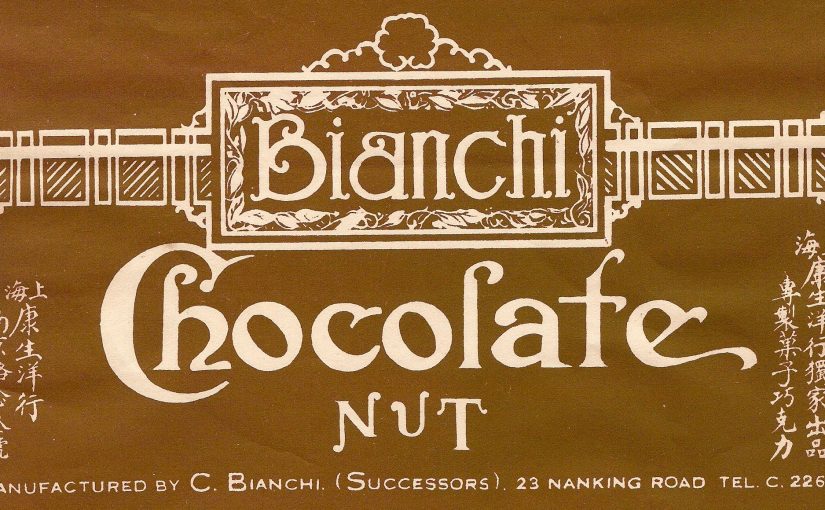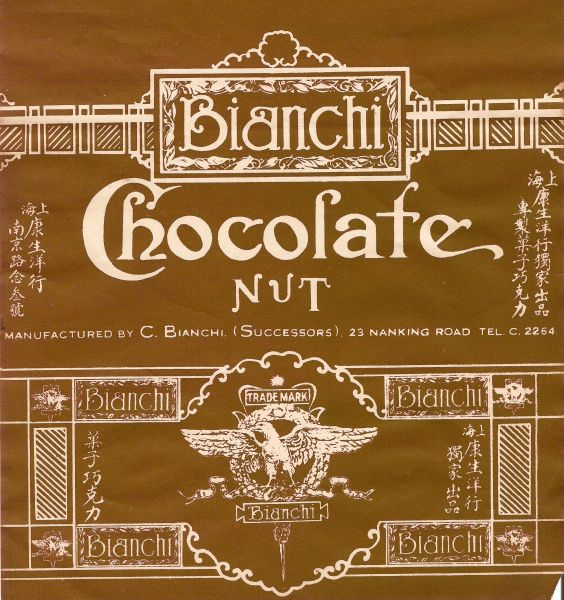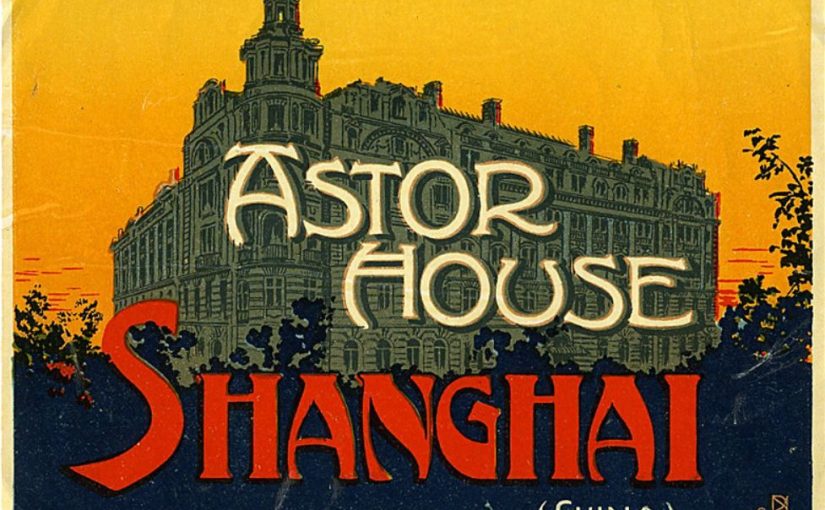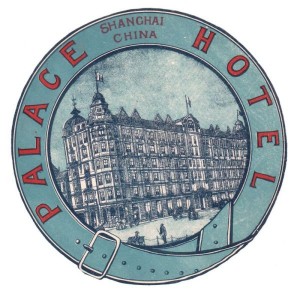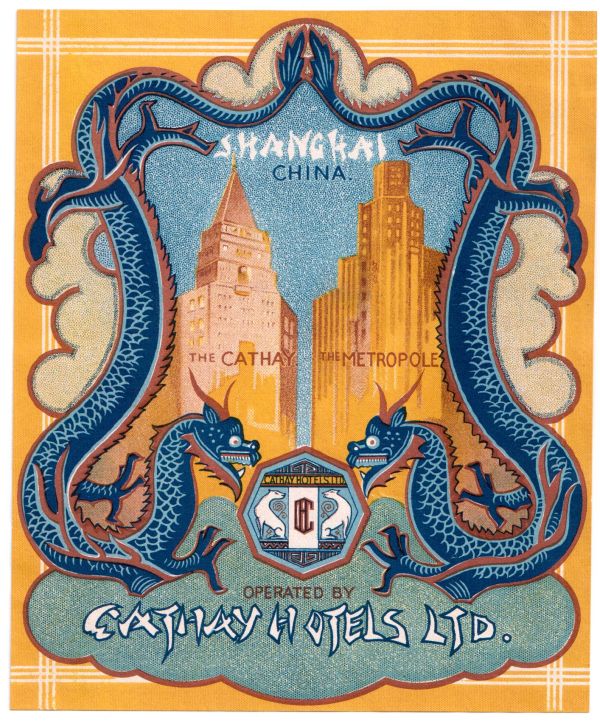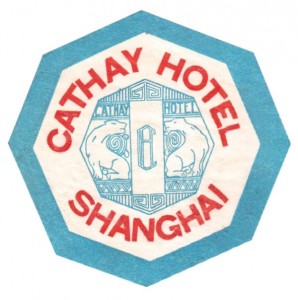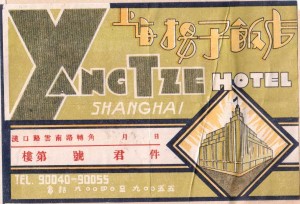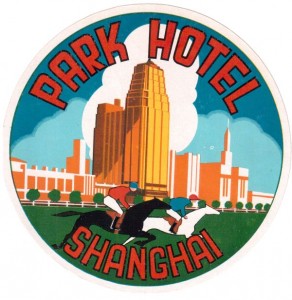Having a sweet tooth myself, I got interested in Old Shanghai sweets brands, like Hazelwood ice cream. A more high level and confidential brand was Bianchi, a pastry and chocolate shop on Nanjing Road.
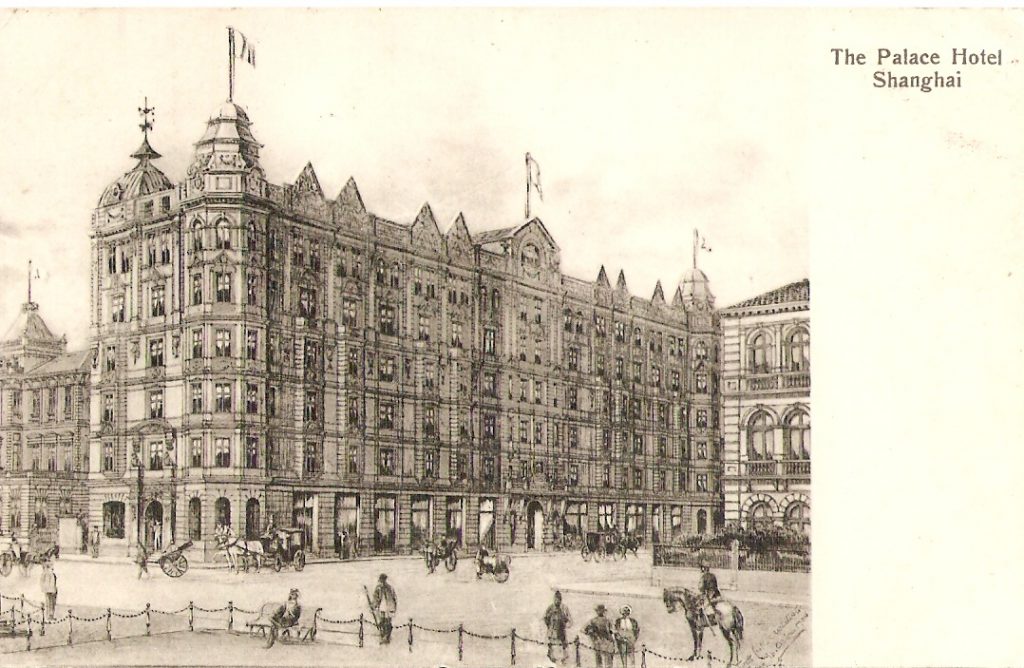
I got to know about Bianchi’s when finding a chocolate wrapping paper at an antique dealer store, probably around 2008. There was no indication of time then, but it turns out that Bianchi was a famous store located on 23 Nanking Road. This is actually inside the former Palace Hotel (today Swatch Peace Hotel), at the corner of the Bund and the Nanjing Road. I guess Bianchi chocolate was the shop on the right-hand side of the main entrance, nowadays selling watches.
Bianchi’s must have been a high level shop, catering for both a foreign and Chinese clientele as the address is written both in English and in Chinese characters on the chocolate wrapping paper.
Bianchi chocolate was advertised as “the Home of Tasty Dainties”. The founder of the company, Attilio Ferrari, resided in Shanghai since 1907. He started Bianchi on Nanking Road in 1918 and operated it until his death at the age of sixty, in 1938 (he was among the oldest Italian residents in the city). (Thanks to Katya Knyazeva @ https://www.facebook.com/mapoldsh/ for the info).
Paul French, author of the China Rhyming blog, found adds for Bianchi shops located at 76 and 154 Nanking Road (http://www.chinarhyming.com/2013/03/25/bianchis-of-nanking-road-ice-creams-and-sodas/). Either the shop moved down the road, or they opened several branches. They were particularly well known for their palmier cake (see post “Tasting Old Shanghai” for more details).
Pastry and chocolate shops were a rarity when I reached Shanghai in 2004, having disappeared along with many western style luxury in the previous decades. They have now come back in force, with bakery, pastry and café having popped up in many places in the city (See post “Shanghai Coffee culture“).
The Bianchi chocolate shop does not exist anymore of course, but just finding this piece of the old times was wonderful. I can picture myself going to buy my chocolate near the riverside, walking those busy streets, full of a mixture of trendy office workers, vendors of all kinds shouting to advertise their products and dockworkers. I get to the Bianchi shop, push the glass door. I look at all the chocolates in the shop, talk to Mr Bianchi about his chocolate, good food, life and other topic. It takes me a few minutes to wake up from my dream, holding my 80 years old chocolate paper in my hands. This old relic is so powerful that I still feel the taste of this chocolate created and eaten many decades ago.
